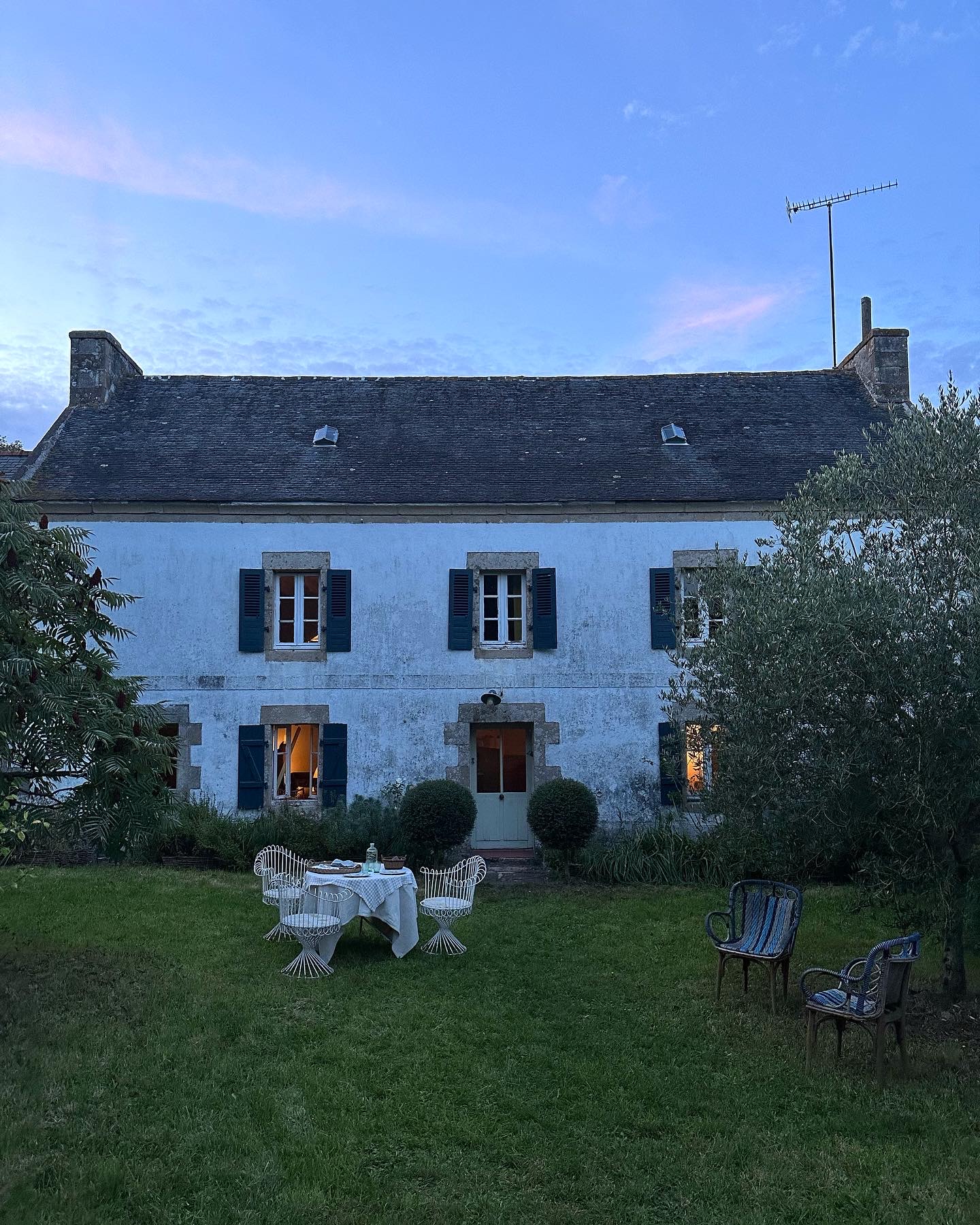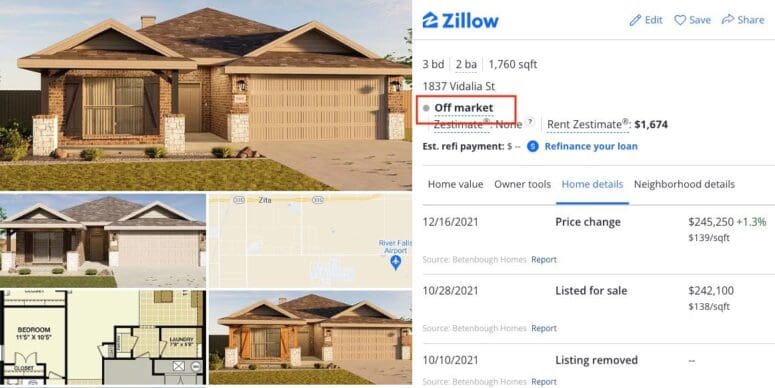This story begins in the early 1960s with a hot tip in a doctor’s office: “My father was a dentist in Paris and a patient told him to have a look at this little hamlet lost in the valley—he had heard from his Breton family that the farmer wanted to sell,” Benoît Rauzy tells us. The hamlet in question is near Audierne in Brittany, and the late 18th century compound became the Rauzy family summer retreat: Benoît has been making pilgrimages to the house since he was born.
With his partner, Anthony Watson, Benoît is the owner of Atelier Vime, purveyor of France’s loveliest rattan furniture, new and vintage. The two went into business on a whim in 2018 when they were remodeling a hôtel particulier in Provence—after discovering it had been the headquarters of a local rattan business that had all but vanished, they set up shop and learned along the way. Anthony and Benoît’s home became a much-celebrated showcase for their creations, and they went on to restore the 18th century house next door: it’s now the Atelier Vime summer emporium.
Meanwhile, these historic house whisperers have also been resuscitating the Rauzy farm—their work got jumpstarted during the pandemic when the couple stayed put in Brittany and did the labor themselves, from clearing brush to laying tiles. “Benoît’s family was surrounded by painters, sculptors, and poets who used the outbuildings as work spaces,” says Anthony. “The place was untouched and still has many creations from these friends.” The kitchen and bath required total overhauls, but seeing these rooms now, you’d never know: “the goal was to keep the atmosphere and poetry.” Of course, there’s now a lot more rattan in residence. Come see.
Photography courtesy of Atelier Vime (@ateliervime).
Above: The exterior of the whitewashed house was left as is with one touch-up: the shutters are newly painted Farrow & Ball’s Hague Blue. The couple re-created Benoît’s father’s garden and planted a now-thriving field of thin wicker for use in their own designs. The property slopes down to the sea arm, the tidal Goyen River.
When the family bought the property, this part of Brittany was “not so famous because it was a very long drive from Paris, they were no real estate agencies, and all of the the farms were still active,” says Anthony. Benoît’s parents were able to buy the property by word of mouth because the resident farmer was marrying someone with more land and moving to her farm.
Above: Harvested wicker gets sorted in an old stable behind the main house. The cupboard is filled with Benoît and Anthony’s reference library of sorts: a collection of antique miniature baskets from all over France.
Above: The house is the rustic counterpart to the couple’s high-style place in Provence. Benoît’s father, Jacques, restored the original hearth and added the Mies van der Rohe Barcelona table. It’s now surrounded by recent additions: an André Arbus Art Deco rug, and Atelier Vime Editions’ Paquebot Armchair, LP Lamp, and Rattan Pelmet.
Above: A prized possession—and Andalusian hound Alma’s favorite place to lounge—is the green velvet sofa that was designed by Jacques for his dental office: “my father used to design furniture himself when he couldn’t find what he was looking for.” The small print is by family friend Nina Nidermiller.
Above: The kitchen retains its 1960s tiled floor and rustic buffet and table. With help from two local friends, Benoît’s and Anthony added a tiled backsplash, new sink, and faucet from Italian brand Stella. Pieces from the couple’s vintage rattan collection include the two chairs, woven table lamp, and hanging lantern and birdcages.
Above: The Balineum tile is 18th century Italian. Anthony’s mother helped him stitch the new sink skirt from ticking fabric found in the house. Botanical plates on the wall were more recently replaced by a rare set of 1920s Suzanne Creston plates of Breton nautical scenes.
Above: Ingredients for lobster ravioli: “we were trying to make them as delicious as the ones chef Frédéric Claquin makes at our favorite restaurant Les Trois Rochers in nearby Combrit,” says Anthony.
Above: A tabletop vignette with an old oil cloth and faience.
Above: The couple’s bedroom/study retains the rustic bookshelf of wood and bricks built by Jacques and filled with family souvenirs. The pine bough is leftover from a DIY door surround that Benoit and Anthony put up during lockdown: see Pine Cones as Decor, our first glimpse of the house.
Above: An antique Uzbek Suzani covers an Empire chair. In the 1960s, the bedroom doors were painted in blue boat paint and have been left as is. Above: The fireplace, foxed mirror, and tiled hearth are original. Benoît and Anthony bought the antique ceramic stove at an auction.
Above: Benoît’s childhood bedroom has a 1960s Italian rattan bed with a cover made from two antique Provençal skirts.
Above: The bureau was painted for one of Benoît’s birthdays by Paule Fournel, another artist family friend. The desk lamp’s shade is by American artist and frequent Atelier Vime collaborator Wayne Pate.
Above: The bathroom received a complete makeover. The shower is entirely new—”we designed it very minimal as a circle,” says Anthony. They cut and fit the mosaic tile themselves. Note the new tub’s Wicker Panel and Rattan Pelmet—all Atelier Vime designs are woven by hand in France and these are custom sized.
Above: “The sink is Art Deco from 1920, we found it in a house nearby and matched it with a Stelle faucet,” says Anthony. The vintage hanging rope sconces are by Audoux-Minnet.
Above: The Five Flowers curtain fabric is by American designer Drusus Tabor whose line is newly available at Schumacher.
Above: The second floor is the attic, known as the reading room because it’s filled with books. The four poster is draped with an antique Aubusson tapestry—and, on occasion, is used by guests. The couple found the antique tôle bathtub at a brocante.
Above: For outdoor feasts, a nearly 10-foot-long farm table is paired with 1950s Mathieu Matégot chairs. An apple orchard surrounds the yard and the wicker field is just beyond.
Above: A view of the house across the sea arm.
Above: Benoît and Alma head to the beach.
We’ve been following Atelier Vime from the start: | BidBuddy.com


 Facebook
Facebook
 X
X
 Pinterest
Pinterest
 Copy Link
Copy Link









